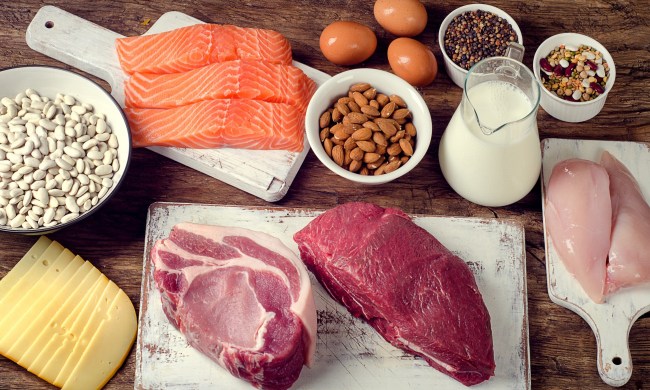As a personal trainer and nutritionist, I always recommend changing your diet to lose weight while maintaining muscle mass. Still, it can be overwhelming, as there are several factors to consider and dieting options to choose from. But not to worry — a cutting meal plan has been proven to be one of the best methods for people looking to eat healthily and achieve their fitness goals.
Hence, this article will guide you on your journey to cutting and show you how to adopt a plan that is rich in protein, healthy carbohydrates, and unsaturated fat but low in calories. It is time to dive in!
What is cutting?

Cutting involves reducing your calorie intake to burn stored fat, ideally while maintaining your muscle mass. You need to consume fewer calories than what is required to maintain your current weight. Most people create this deficit through diet, but exercise can also be taken into account.
While cutting, you want to consume a lot of protein, good fat sources, and a healthy amount of carbohydrates. What makes cutting different from all other diet plans is that it is customized for each individual and should be accompanied by weight lifting and low-impact cardio to promote muscle growth and cardiovascular health.
How does your calorie intake change during cutting?

The number of calories you should consume per day depends on your weight, lifestyle, height, and exercise frequency. But generally, cutting about 500 calories per day from your regular maintenance calories is a good start for anyone. One pound contains 3,500 calories, so this would equate to one pound lost per week.
Another thing to note is that when cutting, the focus is not just on calorie reduction — the quality of your calories also matters. Consuming even a small amount of refined carbs can spike your blood sugar, which may promote fat storage.
A detailed study on calories has revealed that “When comparing foods, an equal amount of calories does not mean that the foods affect the body similarly. For example, obtaining one’s daily calories only from fat may numerically equate to the calories one can get from fruits and vegetables. Still, potential benefits are lost, and numerous risks are associated with not getting the right balance of nutrients.”
So, a cutting meal plan means counting calories and opting for healthier options when you can to support your body during your weight loss journey.
How long should you cut for?

A cutting diet usually lasts eight to 16 weeks, depending on your goals and current weight. If you start experiencing fatigue, a lack of motivation, and plateauing weight loss, it’s likely time to take a break.
Tips for making the optimal cutting meal plan

Eat slowly
When you are hungry, the brain signals that you need to eat. Likewise, when satisfied, the brain also signals that you should stop eating. This is why eating slowly is helpful. It gives your brain time to assess your needs and let you know you are full, helping you stay in a calorie deficit.
Control your portions
The amount of food your body needs is sometimes way less than what you consume. You may not feel full, but it will be adequate for your body, so do not heap your plates full when cutting. Choose small plates and eat less food to limit your calorie intake. Avoid returning for a second portion. Instead, drink water to help with satiety.
Stay hydrated
Water is necessary for many bodily functions, including digestion and burning fat. It is also a great tool for weight loss, as having a glass or two of water can fill your stomach in between meals. Add 90 to 120 ounces of water to your cutting meal plan for overall benefits. Additionally, you can add foods with high water content to your diet. These include cabbage, watermelon, grapefruit, and pineapple.
Avoid liquid carbs
While hydration is important, it’s equally important to do it properly. So, soft drinks, alcohol, and sugar-rich beverages may not be the way to go. They have little to no nutritional value — just carbs and sugar, which increase your appetite and don’t make you full.
Do some cardio
When it comes to being in a calorie deficit, exercise can go a long way toward achieving that. While strength training is essential for building muscles, adding cardio to your plan can help you burn calories efficiently. Choose a form of cardio that you enjoy and will be able to stick with.
Choose fiber-rich and protein-rich foods
Fiber-rich foods form a gel in your digestive system that helps slow down food. This improves satiety and aids digestion. Likewise, protein-rich foods make you feel fuller, leading you to naturally eat less. Prioritize these food sources in your meals for the most successful cut.
Helpful swaps to make during your cut

As we mentioned earlier, cutting is more than calorie restrictions. You need to swap unhealthy and empty calories for good-quality ones. The following are some examples to consider.
- Replace sugary drinks with water.
- Eat whole fruits instead of drinking them through juices.
- Choose healthy oils such as coconut, olive, and avocado over canola, sunflower, and soybean oils.
- Drink black coffee instead of adding sugar and cream.
- Eat egg whites instead of whole eggs.
- Make your protein shakes with water instead of premade protein shakes.
- Swap refined bread for whole-grain bread.
- Swap chips for popcorn.
- Choose fresh berries instead of dried ones.
- Pick baked potatoes over French fries.
Frequently asked questions

What is best to eat while cutting?
When cutting, you should prioritize protein-rich foods, non-starchy carbohydrates, and unsaturated fats. Fruits and vegetables are also non-negotiable as they provide the most fiber and vitamins.
What is the 30/30/30 rule for weight loss?
The 30/30/30 rule is a weight loss trend that involves eating 30 grams of protein within 30 minutes of waking up and then doing 30 minutes of low-intensity workout. It can promote weight loss and encourage a healthy diet and lifestyle.
How many meals do you eat when cutting?
There’s no fixed limit to the meals you can eat when cutting. You can have breakfast, lunch, and dinner with a snack. What matters is portion control and consuming quality calories instead of empty calories. Also, note that it is better to eat small portions of food three times than to eat a large food portion at once.




